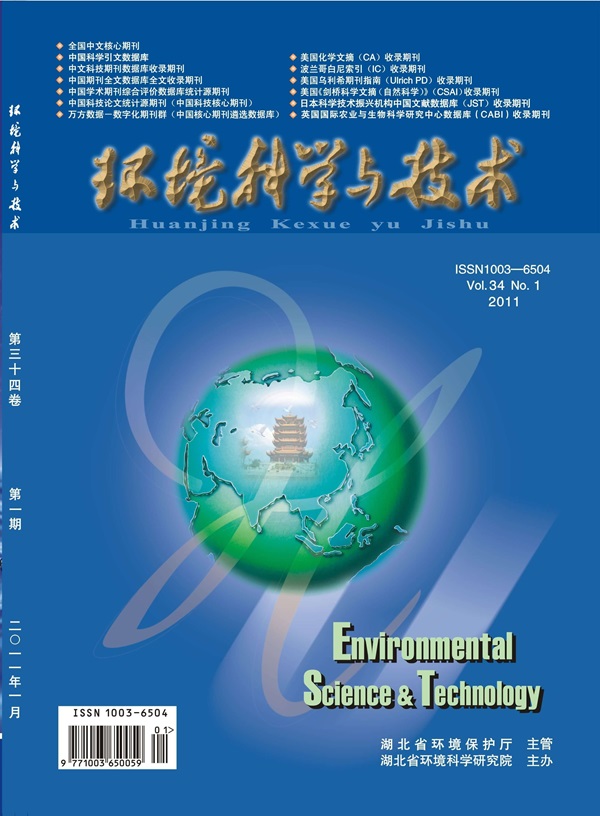How the Most Neglected Residual Species in MOF-Based Catalysts Involved in Catalytic Reactions to Form Toxic Byproducts
IF 10.8
1区 环境科学与生态学
Q1 ENGINEERING, ENVIRONMENTAL
引用次数: 0
Abstract
In recent years, multifarious new materials have been developed for environmental governance. Thereinto, metal organic framework (MOF)-based catalysts have been widely employed for heterogeneous catalysis because of their high porosity to confine noble metal particles faraway from aggregation. However, the potential reactions between residual species from the material synthesis process and target pollutants, which could form highly toxic byproducts, are often neglected. Herein, we took the widely used Zr-MOF, UiO-66, with highly thermal stability supported Pd catalysts as the example to investigate how the residual species in catalysts are involved in aromatic volatile organic compounds (VOCs) degradation reaction. The results showed that residual Cl species originated from the ZrCl4 metal precursor participated in the VOC degradation reaction, leading to the production of various chlorine-containing byproducts, even the hypertoxicity dioxin precursor, dichlorobenzene. Meanwhile, the chlorination mechanism for the formation of chlorine-containing byproducts was revealed by density functional theory calculation. Furthermore, the highly efficient residual Cl removal approaches are proposed. Importantly, the migration and transformation of residual Cl during the degradation of five benzene series VOCs are comprehensively studied and elucidated. We anticipate that these findings will raise alarm about the neglected issue of residual species in MOF-based catalysts for heterogeneous catalysis, especially environmentally friendly catalysis.

基于 MOF 的催化剂中最容易被忽视的残留物如何参与催化反应并形成有毒副产品
近年来,为治理环境而开发的新材料层出不穷。其中,基于金属有机框架(MOF)的催化剂因其高孔隙率可限制贵金属颗粒远离聚集而被广泛用于异相催化。然而,材料合成过程中的残留物与目标污染物之间的潜在反应往往被忽视,这些残留物可能形成毒性很强的副产品。在此,我们以广泛使用的 Zr-MOF、UiO-66 和高热稳定性支撑 Pd 催化剂为例,研究催化剂中的残留物种如何参与芳香族挥发性有机化合物(VOCs)的降解反应。结果表明,源自 ZrCl4 金属前驱体的残余 Cl 物参与了 VOC 降解反应,产生了多种含氯副产物,甚至包括高毒性二恶英前驱体二氯苯。同时,密度泛函理论计算揭示了含氯副产物的氯化机理。此外,还提出了高效去除残余 Cl 的方法。重要的是,我们全面研究并阐明了五种苯系列挥发性有机化合物降解过程中残留 Cl 的迁移和转化。我们希望这些发现能引起人们对基于 MOF 的异相催化(尤其是环境友好催化)中被忽视的残留物种问题的警觉。
本文章由计算机程序翻译,如有差异,请以英文原文为准。
求助全文
约1分钟内获得全文
求助全文
来源期刊

环境科学与技术
环境科学-工程:环境
CiteScore
17.50
自引率
9.60%
发文量
12359
审稿时长
2.8 months
期刊介绍:
Environmental Science & Technology (ES&T) is a co-sponsored academic and technical magazine by the Hubei Provincial Environmental Protection Bureau and the Hubei Provincial Academy of Environmental Sciences.
Environmental Science & Technology (ES&T) holds the status of Chinese core journals, scientific papers source journals of China, Chinese Science Citation Database source journals, and Chinese Academic Journal Comprehensive Evaluation Database source journals. This publication focuses on the academic field of environmental protection, featuring articles related to environmental protection and technical advancements.
 求助内容:
求助内容: 应助结果提醒方式:
应助结果提醒方式:


